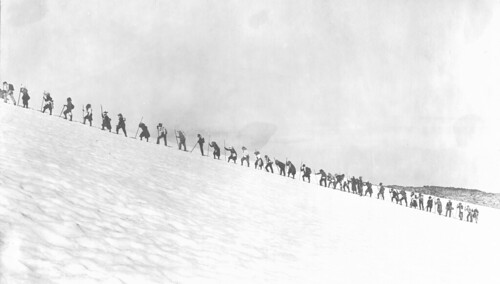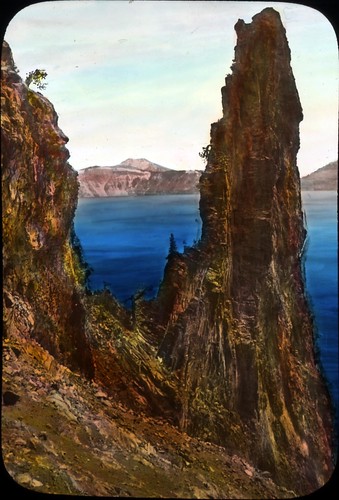Look for more from the Gerald W. Williams Collection Wednesday March 4th
On March 10, 1957, the Columbia River pooled behind the newly constructed Dalles Dam, effectively drowning a five-mile stretch of cascades known as Celilo Falls. The rising water flooded one of the most prolific salmon runs in North America; it was also an area that had been occupied by Pacific Northwest Indians for at least 10,000 years.
Continuing our focus on photographs from the Gerald W. Williams Collection, we’ve decided to show you all some of the images he collected of Celilo Falls. Many of the pictures you’ll find in this set were taken by Williams’ father, Jack Williams, in September 1956 — only a few months before the falls were inundated.
For thousands of years, Celilo Falls was a traditional fishing spot for mid-Columbia tribes, producing millions of pounds of salmon each year; but the area was much more than a “favorite fishing hole.” Nearby Celilo Village was also trading hub for tribes from California, Montana, and Canada, with an active and lively market that saw local salmon traded for medicines, dried meats, and hides from the East and cedar, shells, and beads from the Pacific Coast. Noted by the Lewis and Clark expedition in 1805, the explorers said they found a “great emporium…where all the neighboring nations assemble,” and a population density unlike anything they had seen on their journey —historians have called the Celilo area the “Wall Street of the West.” However, even beyond commerce, the area was a place where “friendships were renewed, and men found brides.”
The US Army Corps of Engineers (USACOE) began work on The Dalles Dam in 1952 as a means of harnessing the Columbia River and providing “clean, sustainable, and cheap” hydroelectric power to Portland and Seattle . Between 1952 and 1955, ‘USACOE and representatives from the Warm Springs, Umatilla, Yakama, and Nez Perce reservations negotiate a monetary settlement for the loss of fishing sites resulting from construction of The Dalles Dam.” It was completed it five years later. Records and recollections say that Big Eddy was under water in less than an hour and Celilo Falls in six.
Where to go for more?
To watch the Oregon Field Guide “Celilo Fishing” video, which features a color film shot by the Army Corps of Engineers, click here. To see a detailed picture of the bottom of the Columbia River at Celilo Falls, check out the sonar data from the Army Corps of Engineers, check out the “Celilo Animation” video found here.
YouTube also has many videos of Celilo Falls, with a search for “Celilo,” you’ll find plenty! For example, there are some great historic photos of the people of Celilo Falls in the “celilo finished 0001” YouTube video by clicking here.
Oregon Public Broadcasting Oregon Territory program called “Celilo Falls,”which aired March 3, 2007 is worth a viewing. Find out more here.
Katrine Barber’s 2005 book Death of Celilo Falls is another excellent resource for information on the both the cultural and political history of the area. “This book examines the negotiations and controversies that took place during the planning and construction of The Dalles dam and the profound impact the project had on both the Indian community of Celilo Village and the non-Indian town of The Dalles.”
Sites Consulted:
- King, Anna. “50 years after flooding Celilo Falls,” Tri-City Herald, 3/4/2007. http://www.bluefish.org/celilo50.htm
- Cressman, L.S.; et al. (1960). “Cultural Sequences at the Dalles, Oregon: A Contribution to Pacific Northwest Prehistory”. Transactions of the American Philosophical Society 50 (10): 1–108.
- Alpert, Emily (2006-07-10). “Remembering Celilo Falls,” The Dalles Chronicle, 7/10/2006. http://www.bluefish.org/celilofa.htm.
- Wilkinson, Charles. “Celilo Falls,” Oregon Historical Quarterly, vol. 108 no. 4, Winter 2007. http://www.historycooperative.org/journals/ohq/108.4/wilkinson.html.
- “Significant Events in the History of Celilo Falls,” Oregon Historical Quarterly, vol. 108 no. 4, Winter 2007. http://www.historycooperative.org/journals/ohq/108.4/editor.html
- Barber, Katrine. Death of Celilo Falls, University of Washington Press, 2005.





 4-H boys at the winter feed lot, located at the Warm Springs Agency
4-H boys at the winter feed lot, located at the Warm Springs Agency

